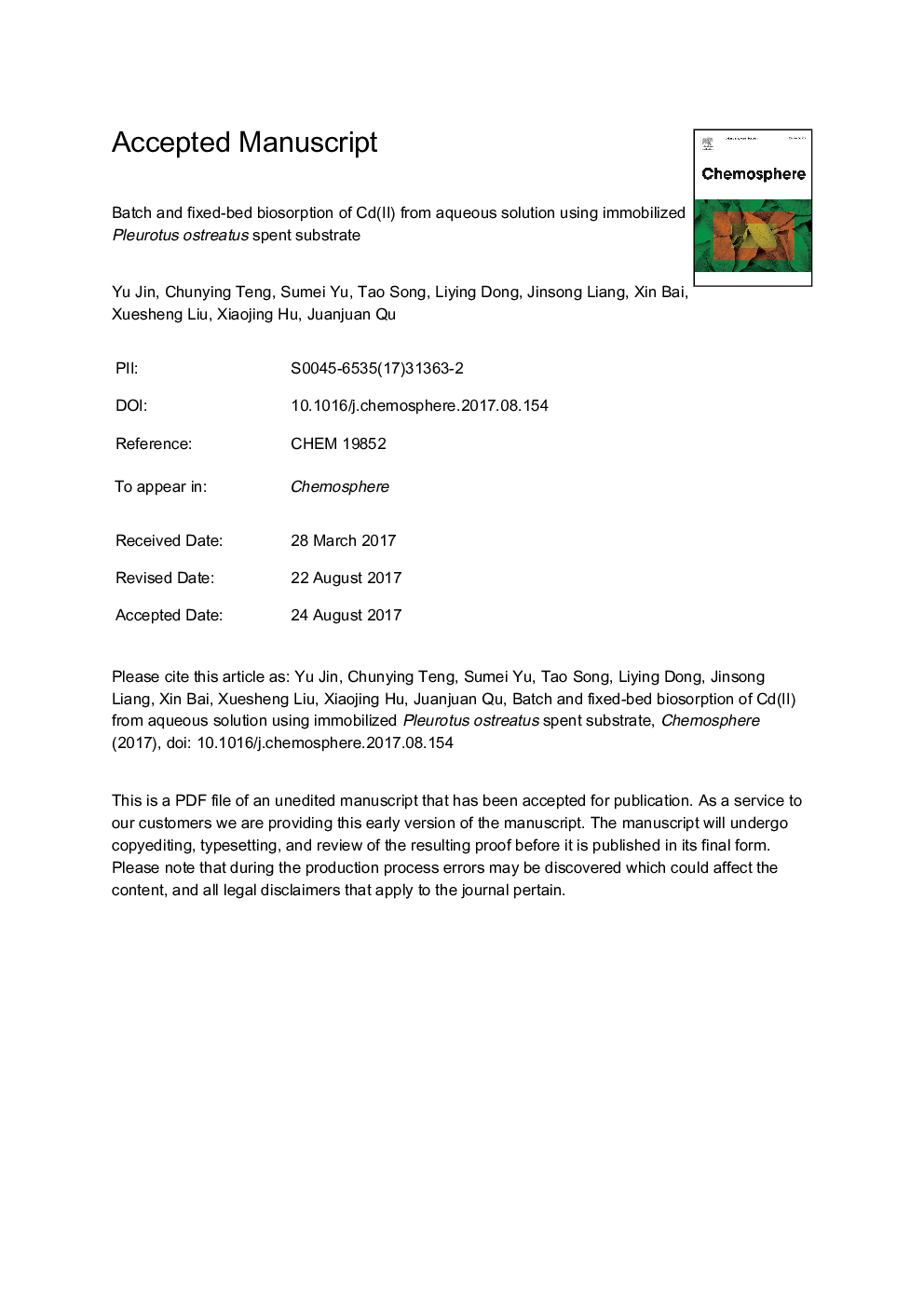| Article ID | Journal | Published Year | Pages | File Type |
|---|---|---|---|---|
| 8852918 | Chemosphere | 2018 | 30 Pages |
Abstract
To prevent the blockage in a continuous fix-bed system, Pleurotus Ostreatus spent substrate (POSS), a composite agricultural waste, was immobilized into granular adsorbents (IPOSS) with polymeric matrix, and used to remove Cd(II) from synthetic wastewater in batch experiment as well as in continuous fixed-bed column system. In batch experiment, higher pH, temperature and Cd(II) initial concentration were conducive to a higher biosorption capacity, and the maximum biosorption capacity reached up to 87.2 mg/g at Cd(II) initial concentration of 200 mg/L, pH 6 and 25 °C. The biosorption of Cd(II) onto IPOSS followed the Langmuir isotherm model with the maximum adsorption capacity(qmax) of 100 mg/g. The biosorption was an endothermic reaction and a spontaneous process based on positive value of ÎH0 and negative value of ÎG0. In fixed-bed column system, higher bed depth, lower flow rate and influent Cd(II) concentration led to a longer breakthrough and exhaustion time, and the best performance (equilibrium uptake (qe) of 14.4 mg, breakthrough time at 31 h and exhaustion time at 78 h) was achieved at a bed depth of 110 cm, a flow rate of 1.2 L/h and an influent concentration of 100 mg/L. Furthermore, regeneration experiment revealed a good reusability of IPOSS with 0.1 M HNO3 as eluting agent during three cycles of adsorption and desorption. Cd(II) biosorption onto IPOSS mainly relied on a chemical process including ion exchange and complexation or coordination revealed by SEM-EDX, FTIR and XRD analysis.
Related Topics
Life Sciences
Environmental Science
Environmental Chemistry
Authors
Yu Jin, Chunying Teng, Sumei Yu, Tao Song, Liying Dong, Jinsong Liang, Xin Bai, Xuesheng Liu, Xiaojing Hu, Juanjuan Qu,
